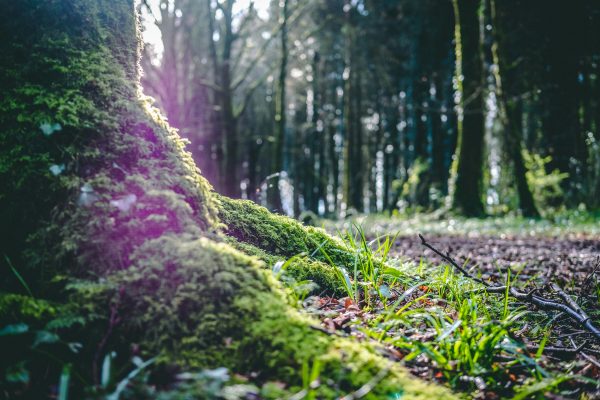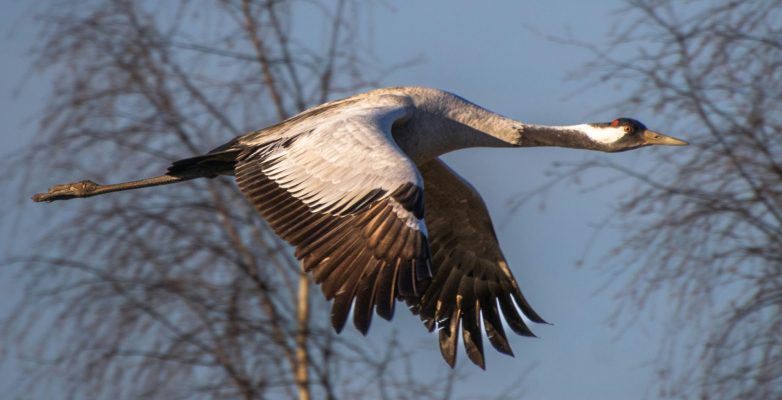2023 saw the publication of the “Report of the Citizens’ Assembly on Biodiversity Loss”. Many impactful solutions to biodiversity loss are found within the recommendations of the Citizens’ Assembly. It is vital that the Government of Ireland act on these recommendations. This series of articles explores ideas found within the Citizens’ Assembly recommendations. This article first appeared in 2024 Irish Wildlife magazine spring issue. Get your copy of the latest Irish Wildlife magazine by joining the IWT today.
Here Fintan Kelly, of the Irish Environmental Network, explores the idea of reforming the legal mandates of Coillte and Bord Na Móna. The opinions expressed in this blog are those of the author and do not necessarily represent the position of the Irish Wildlife Trust.
Written by Fintan Kelly
The Environmental Pillar, the Citizens Assembly on Biodiversity Loss and the Joint Committee on Environment and Climate Action, have all called for reform in the legal mandates of Coillte and Bord Na Móna. The government’s failure to do so requires justification.
The hastening pace of biodiversity collapse and climate breakdown and the sheer scale and complexity of the challenge can sometimes feel like we are standing still facing an oncoming tsunami, bracing ourselves for impact. The challenge of revolutionising our economies and societies and reimagining our relationship with nature is immense. Why then do we constantly find ways to compound our labours by hindering nature’s ability to heal itself and in the process restore balance to this creaking ship we call home? Nature doesn’t need a saviour, it just needs a ceasefire.

Derrycarne Woods, Co Leitrim (Image credit: John Tecuceanu via Unsplash)
One of the most evocative illustrations of this is the fledging of Common Cranes chicks in Offaly over the last two summers, after an absence from our shores of over 300 years. Like the return of the Common Buzzard, the Great Spotted Woodpecker, Marsh Harrier and Osprey, this conservation marvel demonstrates that given a sliver of an opportunity and sometimes a helping hand, life will find a way. Our raised bogs had been a tapestry of life at the heart of our island, slowly growing in size, complexity and bio-abundance since the end of the ice age. We fell upon them with all our energy and industry, draining, digging and burning them, and when there was nothing left worth taking we withdrew. Nature needing no invitation has begun the salvage operation on some bogs, reforming habitat mosaics of wetlands, bogs and woodland and by doing so halting the degradation of peat, preventing the emission of vast amounts of greenhouse gases and water pollution. This spring pairs of Common Cranes again danced, throwing their heads back and trumpeting in synchrony on what had been the post-industrial wasteland of a Bord Na Móna cutaway bog. The Common Crane is just one thread in this reweaving tapestry of life. This is a powerful lesson if we have the wisdom to learn from it.

Common Crane (credit: Juho Luomala via unsplash)
When challenged to answer the question of “where should we make space for Nature in Ireland?”, the Environmental Pillar, the Citizens Assembly on Biodiversity Loss, and the Joint Committee on Environment and Climate Action have come to the same conclusion.
Public Land covers around 11% of the land owned in the State. This is mostly made up of 1% owned by Bord Na Móna and 9% public forestry, mainly owned by Coillte. The untapped potential of Bord Na Móna and Coillte’s land holdings presents an unprecedented opportunity to restore nature at scale, delivering essential ecosystem services to society such as biodiversity restoration, climate change adaptation and mitigation, as well as employment and public amenity. At a time when we are asking more and more of private landowners it is critically important that the State is seen to lead from the front. Public land must be utilised in the public interest and the Irish people should have a greater say in how that is achieved. Reforming land use on public land managed by Coillte and Bord Na Móna is not only desirable but necessary to achieve international targets to reduce green-house gas emissions and to restore nature.
Bord na Móna’s landholding is constituted of a network of 130 bogs covering around 80,000 ha. Only a small percentage of this is composed of semi-intact bogland with the rest being active industrial or post-industrial cutover bog. Natural and cutover peatlands together contain just under half of the national peatland carbon stock. Degraded peatlands are a significant source of emission nationally estimated at around 860,000 tonnes of carbon per year. Restoration of peatlands and organic soils has the potential to reduce carbon losses in a relatively short time following rewetting; while rewetting and restoring peatlands can deliver carbon storage and sequestration and co-benefits such as biodiversity, improved water quality and water regulation. Rewetting and rehabilitation targets for industrial peatlands therefore play an important role in Irish climate policy. Bord Na Móna are obliged by EPA licensing to rehabilitate sites post production and under Ireland’s Climate Action Plan they are committed to the enhanced rehabilitation of 33,000 ha of peatlands. However, this is well shy of the 70,000 ha of exploited peatlands that the EPA say need to be rehabilitated if Ireland is to achieve net-zero across the agriculture and land use sectors by 2050. When it comes to peatland conservation, protection is always better than restoration and more clearly needs to be done to halt domestic and industrial peat extraction on public land, needless to say working in collaboration with communities.
Coillte is the largest landowner in the State, managing a landholding of 440,000 ha, 84% of which is forested. Ireland’s unnatural and industrial model of forestry is arguably the least sustainable in Europe. For example, within the EU Ireland has the highest share of forest area dominated by introduced tree species and the highest level of plantation forestry. This is in stark contrast to Europe as a whole where 87% of forest area is semi-natural. Coillte developed this blueprint for Irish forestry and drove national afforestation up until the mid-1980’s. Coillte landholding remains dominated by low diversity non-native plantations which are clear-cut, with many being replanted on peatlands despite new rules banning the afforestation of deep peat. This is a serious issue considering Coillte are also the largest peatland owner in Ireland. Coillte report that they have 137,000 ha of afforested peatlands and at least 30,000 ha on deep peat, which they admit “present a carbon emission risk, that should be redesigned by either rewetting or rewilding”. The legacy issues associated with the afforestation of peatlands have been largely ignored until recently when the Climate Change Advisory Council called for the rewetting and rehabilitation of afforested peatlands and the revision of relevant legislation.
Coillte also own internationally important sites for biodiversity. These include approx. 96,000 ha of protected sites, including Special Protection Areas (SPA) and Special Areas of Conservation (SAC). According to Coillte’s own assessment, their landholdings support a number of rare, threatened or endangered ecosystems. This includes a large proportion of the six SPA that were designated for the protection of breeding Hen harrier (Circus cyaneus). This species is at crisis point as breeding numbers have declined by a third since 2015 and 59% since the first national survey 1998/2000. A key driver of this collapse has been the loss of upland peatland and grassland habitats with afforestation being the primary driver of habitat loss. Coillte’s land holdings also encompasses many nationally important high-status water bodies which support Atlantic Salmon (Salmo salar) and Freshwater Pearl Mussel (Margaritifera margaritifera). The prospects for many of these populations are in doubt as plantations approach the point where many are due to be clear-felled, which will result in a potentially terminal spike in pollution without intervention.
While Coillte have committed to increasing the area of their estate managed primarily for nature to 30% by 2025, this commitment is scarcely credible given that they claim that protected sites which are currently managed primarily for commercial timber production already fall within the 20% of their estate being ‘managed primarily for biodiversity’. While Coillte Nature are driving welcome restoration projects, the scale of these projects and the questionable prioritisation of restoration sites means the level of ambition falls well short of addressing the systemic issues previously outlined. Coillte have no targets or timelines to restore afforested peatlands and up until relatively recently they advocated for further afforestation within Hen harrier SPA sites.
Given the high biodiversity value and restoration potential of Bord na Móna and Coillte landholdings and the importance of peatlands, wetlands and woodlands in Ireland’s efforts to tackle climate change, both public bodies must play a leading role in restoring nature. Both bodies have significant expertise when it comes to restoration having been involved in numerous EU LIFE projects. While the value of these public lands is obvious there is no clear framework in place to identify which sites should be prioritised for nature restoration. This has led to a situation where key sites such as Derryadd Bog in Longford and the Common Crane supporting bogs in Offaly, are threatened by renewable energy developments. Contrary to the rebranding and public communications campaigns, the use of public land continues to be driven by commercial interests while affected communities remain peripheral figures in an opaque decision-making process. A pivotal contributing factor to this is that the operation of both semi-states remains underpinned by outdated commercial mandates, which in turn informs everything from the composition of their boards to how they operate on the ground.
The Environmental Pillar is strongly of the view that these legal mandates must be brought in line with societal expectations and the stark realities of the States declared biodiversity and climate emergency. The review should be informed by the relevant recommendations of the Citizens Assembly on Biodiversity Loss. Such a review is already long overdue considering the Programme for Government already committed to review the remits of both bodies. This is a rational first step to reform the narrow economic focus that has directed the mis-management and governance of public lands. To paraphrase Rachel Carson, we are a part of nature, and our war against nature is inevitably a war against ourselves. Let’s choose to end the war within and the war without, public lands are a good place to start.
About the Author: Fintan is Agriculture Policy Officer at the Irish Environmental Network (IEN). Fintan has a MSc in Environmental Biology from Utrecht University and a BSc in Environmental Science from NUI Galway. He specialises in Environmental Policy, Advocacy and Planning and has been working within the Irish eNGO sector since 2012, having previously worked for BirdWatch Ireland, An Taisce, SWAN and the Irish Wildlife Trust.